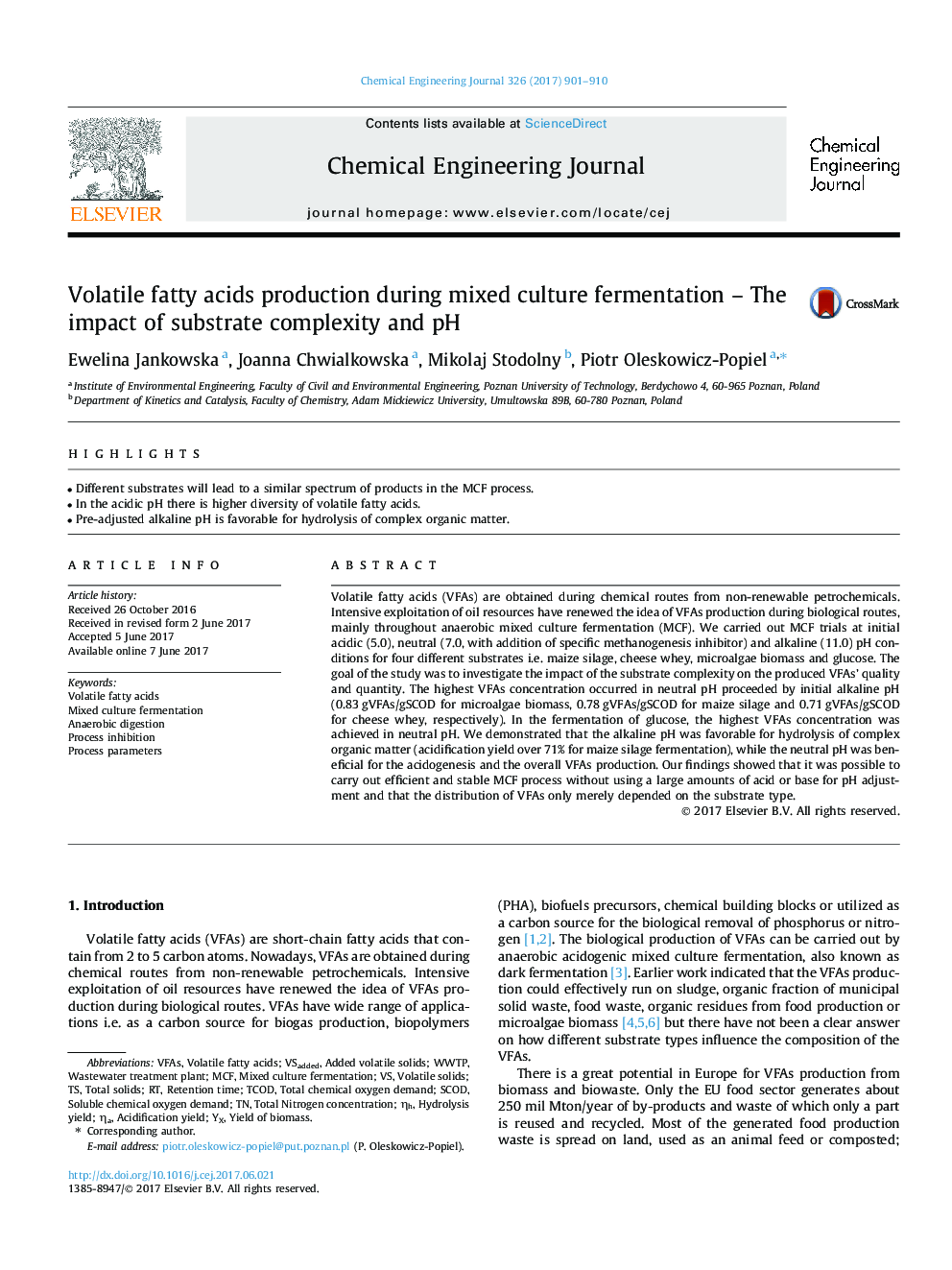| کد مقاله | کد نشریه | سال انتشار | مقاله انگلیسی | نسخه تمام متن |
|---|---|---|---|---|
| 6465523 | 1422952 | 2017 | 10 صفحه PDF | دانلود رایگان |

- Different substrates will lead to a similar spectrum of products in the MCF process.
- In the acidic pH there is higher diversity of volatile fatty acids.
- Pre-adjusted alkaline pH is favorable for hydrolysis of complex organic matter.
Volatile fatty acids (VFAs) are obtained during chemical routes from non-renewable petrochemicals. Intensive exploitation of oil resources have renewed the idea of VFAs production during biological routes, mainly throughout anaerobic mixed culture fermentation (MCF). We carried out MCF trials at initial acidic (5.0), neutral (7.0, with addition of specific methanogenesis inhibitor) and alkaline (11.0) pH conditions for four different substrates i.e. maize silage, cheese whey, microalgae biomass and glucose. The goal of the study was to investigate the impact of the substrate complexity on the produced VFAs' quality and quantity. The highest VFAs concentration occurred in neutral pH proceeded by initial alkaline pH (0.83Â gVFAs/gSCOD for microalgae biomass, 0.78Â gVFAs/gSCOD for maize silage and 0.71Â gVFAs/gSCOD for cheese whey, respectively). In the fermentation of glucose, the highest VFAs concentration was achieved in neutral pH. We demonstrated that the alkaline pH was favorable for hydrolysis of complex organic matter (acidification yield over 71% for maize silage fermentation), while the neutral pH was beneficial for the acidogenesis and the overall VFAs production. Our findings showed that it was possible to carry out efficient and stable MCF process without using a large amounts of acid or base for pH adjustment and that the distribution of VFAs only merely depended on the substrate type.
Journal: Chemical Engineering Journal - Volume 326, 15 October 2017, Pages 901-910